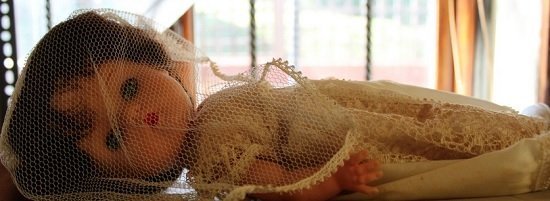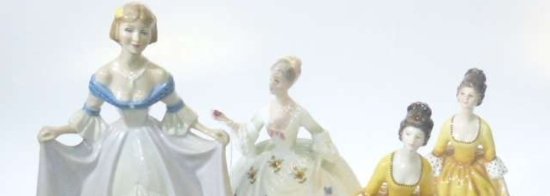The one-of-a-kind doll seems to wreak its share of controversy among the new generation of collectors who grew up coddling mass produced plastic and vinyl dolls. Even the majority of antique dolls (Bru, Jumeau, Simon & Halbig, Armand Marseille, etc.) are merely old re productions. The only attributes that differentiate one doll from the other is the painting of features (eyebrows, eyelashes, lips), facial coloring (eye shadow, cheek rouge), wig styles/colors, and clothing. (Bisque quality determines the overall value of the doll.)
One-of-a-kind dolls date to ancient times, and have been found in the tombs of the deceased. When a child desired a doll, a parent ” if not wealthy ” made one from whatever was at hand: seashells, nuts, a corncob, an old stocking, or shoe. If a parent or relative had talent, the doll might be whittled from a piece of wood or a stick. Dolls that collectors label “Queen Annes” are actually one-of-a-kind carvings, as are the later peg-woodens. Many of the creche figures were made of carved wood, as were other church figures and “effigies” of a portrait nature. Some effigies were carved from a block of wax. These effigies were likenesses of the departed and placed either in the casket or displayed in the church. All of these antiquated doll types have become priceless collector items and learning tools, relating history with realism.
A one-off doll can be the first doll poured from a mold, providing no other dolls are duplicated from the same mold. Most often, however, the doll is sculpted from a self-hardening clay, molded from cloth, or whittled from wood. A true one-off must have all of its original parts (legs, arms, body) fashioned just for that particular head. In the past, painted eyes and carved/painted hair was favored in lieu of inset eyes and a wig, but that dogma no longer applies, since glass or acrylic eyes and a quality handmade wig enhance the beauty of the artwork and magically bring it to life. Handmade clothing is p referable to machine sewn, and natural (or antique) fabrics are preferable to synthetics. The long hours of labor required to create such a doll, automatically makes it more costly and valuable than a common mass-produced piece.
In centuries past, one-off dolls, being so labor intensive, were fashioned solely for the amusement of the well-to-do or royalty, and the dolls (usually commissioned) were highly regarded and displayed midst luxurious surroundings in a boudoir or salon. Even the artist himself (men made most of the dolls) was held in high esteem.
In the superstitious Victoria era, a unique one-off doll was made by means of a “death mask.” A mold was taken from the face of the deceased infant or child, and the substance from which the face was cast was attached to a modeled clay bust that included the rear of the head, neck, and shoulders. In turn, this “shoulderhead” was cast into a mold into which wax was poured. The wax shoulderhead was then attached to a cloth body, given limbs, and dressed in the clothing of the deceased. (Eye sockets w e re either cut out and inset with glass eyes or left in the “sleeping” stage.) The author has owned these lifesize effigy dolls, and found them too realistic for comfort.
The cheaper-priced, mass-produced bisque-headed dolls manufactured in the Orient by the carload, and the plastic “fashion” dolls of recent vintage, have almost obscured the magic and genius of that which was and is being made entirely by hand. But, in the long haul, when all the fanfare of the present is merely a whisper in the winds of time, it will be the rare and unusual that shine the brightest midst the flotsam.




